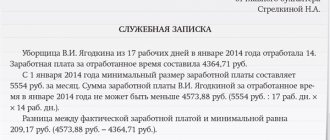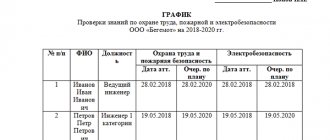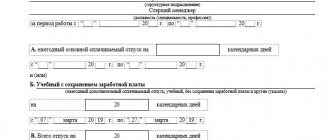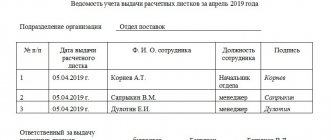Is it compiled in the absence of an employee at the workplace{q}
Such a document is usually drawn up in any form, but in compliance with the rules for composing a business letter.
It must contain a number of details. The report can be filled out and printed on a computer, or written with a pen on a piece of paper. At the top of the sheet on the right side, write down the name of the director’s position, or the person to whom the report is sent, the name of the company, full name. All information is written in the dative case.
https://www.youtube.com/watch{q}v=w5dyXQxEEXM
Then in the middle of the sheet the title of the document is written. Nearby you can provide a column for registration - incoming number and date of receipt.
In the next line under the heading, you can briefly reflect the contents of the report, for example, “On S. A. Ivanov’s failure to show up for work.”
After this, you need to tell a narrative about the event that happened. This should include the date and time when it was discovered that the employee did not show up at his place, the total duration of absence, the name of the department in which he worked, personal data.
Next, you need to describe the measures that the report writer took to find out the employee’s current location. For example, here you can write that calls were made to a cell phone, landline phone, letters were sent to e-mail, etc.
Next, you need to describe what results were achieved, whether it was possible to find out the reasons for absence from work. Here you can also describe whether the employee was able to explain himself or refused, if he has supporting documents, etc.
If attempts to contact did not lead to anything, this should also be reflected in the report. Next, you can describe whether any damage was caused to the company due to his absence from the workplace. If the answer is yes, you can indicate the extent of this damage.
Next, the writer of the report can advise what measures should be applied to the violator. This could be either a reprimand or dismissal. It is advisable to justify why it is recommended to do this. In the same paragraph, you can indicate information about whether this employee has been subject to disciplinary punishment previously.
This completes the document preparation. You need to step back a little, put your signature and the date of compilation.
A memo is issued to the employee if he has committed a crime and has not been at work for a long time - more than 4 hours. Information through this document is conveyed to management.
Together with the report, an absence from work report is drawn up, which records the exact time when the employee did not show up.
Completed documents are given to the manager for review. After receiving explanations about the reasons for absenteeism, if they are disrespectful, the manager may fire the employee or impose a disciplinary sanction on him. Is it possible to fire a pregnant woman for absenteeism{q}
How to reprimand for absenteeism{q}
You need to know that such documents must be drawn up carefully and on the same day when the employee does not come to the workplace.
Before drawing up a memo and act, you need to call the employee and find out why he is not at work.
If the employee could not explain his absence from work, then it is necessary to document the fact of absence. The law does not contain a mandatory requirement to draw up a report or memo, but the document is necessary as it is evidence of truancy.
In larger companies, a memo should be drawn up if an employee is absent from work for more than four hours without a good reason.
You can enter into the document not only information about absenteeism, but also information about the commission of any actions, and give a recommendation on how to punish the employee.
This is of great importance in large enterprises, when the boss cannot know all the employees personally.
It happens that the immediate supervisor of a truant wants to make the punishment lighter. In such situations, the report will help you choose the right preventive measures.
The procedure for dismissal for absenteeism clearly regulates the condition - absence from work. But what is considered a workplace{q} An office, a company territory or a chair on which an employee sits while working{q}
In this matter, you should first study the job description and the employment contract with the employee, as well as the collective agreement, if any. Additionally, other local acts (orders, instructions, regulations) can be used that define the “workplace” for a specific employee.
For example, an instruction or order for a worker may indicate that his workplace is a specific machine or workshop number. In this case, absenteeism will be considered the time that the employee spent outside the workshop or at the machine.
https://www.youtube.com/watch{q}v=XTqhwVlL7qk
The law gives an employer the right to dismiss an employee for absenteeism if the employee has been absent for 4 hours or more. This means that if an absence of exactly 4 hours or less is recorded, then you cannot be fired for absenteeism. Yes, other disciplinary measures can be taken, such as a reprimand, but not dismissal.
Further, the period of absence does not include the lunch break. Reason – art. 108 of the Labor Code of the Russian Federation, which excludes the duration of the break from working time. Therefore, if, for example, an employee came to work at 14:20, but was supposed to at 10:00, while the break was set from 13:00 to 14:00, then this act will not be considered absenteeism, since the employee was absent only 3 hours 20 minutes.
The Labor Code of the Russian Federation allows you to take into account and summarize all periods when the employee was not on site, but only within one shift or day, depending on the established schedule. That is, periods of absence cannot be summed up over several days or shifts.
It would be acceptable to consider, for example, absenteeism if the employee was not present:
- 1 hour in the morning;
- 1 hour 10 minutes after lunch;
- 2 hours at the end of the shift.
In total, 4 hours and 10 minutes will be missed for the whole day. This can be qualified as truancy, subject to other procedural requirements.
Who can apply?
A report is issued if the employee does not pick up the phone and has been absent for more than four hours. The law does not say who exactly should be involved in drawing up the document.
But usually this is done by the employee’s immediate supervisor. After all, he knows the people who work for him better than anyone else. Therefore, he must find out the reason why the employee is not at work.
If the boss does nothing, then any employee of the enterprise has the right to draw up the document. If a small company, then the memo is drawn up either by an employee of the human resources department or by a specialist who is responsible for keeping track of working hours.
The execution of such a document is usually done in free form, but some rules must be followed. There must be details.
On the right side at the top of the sheet you need to write the position of the boss to whom the document is transferred. You need to write down the name of the company and full name. truant in full form.
In the middle of the report you need to name the document and not far from this write the incoming number and date of receipt. Next, you will need to tell the reason for the employee’s absence from work, enter the date and time when the person was not at work, and the duration of the absence.
It is necessary to write down what measures the immediate superior took to find out where the employee was.
You can indicate that you tried to call both a mobile and a landline number, and indicate the results of searching for the absent employee. If the culprit tried to explain the reason for the absence, then this must also be indicated. If damage is caused to the company due to absenteeism, this fact must also be included in the text.
After drawing up, you must sign and date the day on which the document was drawn up.
According to the Resolution of the Plenum of the Supreme Court dated February 17, 2004 No. 2, truancy is recognized as:
- absence from work (outside the workplace) without good reason for more than 4 hours in a row during the working day;
- unauthorized use of rest days;
- unauthorized leave.
A normal and responsible employee will always warn the employer if something happens to him and he does not come to work. But if he disappears and doesn’t answer phone calls, he’s probably playing truant. Let's look at the procedure for registering dismissal for absenteeism.
An act is drawn up in free form in the presence of two witnesses.
Special cases of dismissal for absenteeism
This service is a confirmation of sending the note.
In this article you will learn how to write a note to deprive employees of bonuses.
To correctly write an explanatory note, carefully study this article with examples. What is a memo and how to write it{q}
It is advisable to compose the document in two original versions. According to the rules, the document is transferred to the secretary, from whom it would be useful to receive a note confirming the acceptance of the document for consideration.
After that, wait for the resolution of the authorities.
https://www.youtube.com/watch{q}v=wAJpYTsIXsU
The memo serves as confirmation that the posted employee is in place, plus records the dates of arrival and return from the business trip. This document can be issued if:
- the employee travels on a rented, personal or official vehicle;
- The employee does not have documents confirming his travel and residence.
There are often cases when, for production reasons, managers have to recall one of their employees from vacation.
We invite you to read: Payment to employees upon liquidation of a bank - Your lawyer
style=" float: left; margin: 0 10px 5px 0;" src alt>
Not every absence from work is regarded as absenteeism, even if it has almost all the signs. For example, it will not be considered absenteeism if the employee does not want to go to work on a non-working day. However, there are exceptions to this rule, the same as when recalled from vacation. It is acceptable to have employees work on days off if this is required to recover from accidents or emergencies.
It is unacceptable to fire someone if an employee is sick. If an employee was hastily fired for absenteeism, and he brought sick leave in the form of an explanation of the reason, then such an employee must be reinstated in his position, since the dismissal is unlawful. However, if the fact of concealment of illness and the presence of sick leave has been established, then during the trial the court may side with the employer, considering that the employee is abusing his rights and infringing on the rights of the employer (Resolution of the Supreme Court of the Russian Federation).
In their lawsuits, citizens explain the situation this way: “I was fired for absenteeism while I was on sick leave.” A certificate of incapacity for work is provided as proof. This is not enough; it is necessary to prove that the employer was notified that the employee was ill. Moreover, a citizen may be denied a claim if he refuses to give an explanation. Of course, if he could do it for objective reasons.
Employers often want to fire a woman in a position. Especially if she commits misconduct. However, the question: “How to fire a pregnant woman for absenteeism {q}” has a simple answer: “No way.”
The Labor Code directly prohibits any grounds for terminating an agreement with a pregnant woman at the initiative of the employer, except for the complete liquidation of the organization (Article 261 of the Labor Code of the Russian Federation). Can a pregnant woman be fired under this article if she has committed an offense {q} Yes, but only on the basis of Art. 336 of the Labor Code of the Russian Federation, which regulates the application of sanctions to employees of educational institutions.
Zinovieva Natalya Igorevna
Lawyer at the Legal Defense Board. Specializes in handling cases related to labor disputes. Defense in court, preparation of claims and other regulatory documents to regulatory authorities.
Still have questions on the topic Ask a lawyer
The main reasons for writing a memo are various violations of labor discipline by an employee. They are usually specified in the employment contract, which is drawn up when a citizen is hired and signed by both the employee and the employer.
It should be noted that the employee’s signature on the employment contract means agreement with all points of the document. It is almost impossible to prove your case in court if controversial issues arise later.
Violations of labor discipline rules mean non-compliance with the clauses of the contract. The most common offenses are:
- absenteeism (absence from work without presenting documents confirming a valid reason);
- lateness (systematic late arrival at the place of work, three or more times per month);
- the presence of an employee at work in an insane state (alcohol or drug intoxication).
A higher-ranking employee who directly witnessed the incident has the right to submit such a document for consideration by superiors. When preparing the document, be sure to indicate the following information:
- full name of the organization or enterprise;
- Full name of the manager to whom the note is presented;
- Full name of the person who claims violation of labor discipline;
- Name;
- date of;
- signature;
- registration number.
If an employee is absent from his place of work for more than four hours in a row, then this violation is called absenteeism. This is a direct reason for writing a memo to higher authorities.
The report is drawn up in a business style and addressed to the head of the department. The main part of the document should clearly describe the violation and end with a request for punishment. This could be a reprimand if the offense was committed for the first time or dismissal (for regular absenteeism).
For systematic lateness to work without a good reason, an employee may be fired. But unlike absenteeism, before writing a report, the boss will have to prove with documents that the delays are permanent.
Evidence may include an electronic pass or testimony from other employees. A notice of dismissal can be drawn up if three or more cases of lateness in a month are proven. An act must be attached to the report; otherwise, the employee can only be subject to disciplinary action in the form of a reprimand, fine or deprivation of bonus.
Dismissing an employee who appears at work in a state of insanity is not as simple as it seems at first glance. Without a medical examination, it is quite difficult to prove that an employee’s condition is caused by the use of intoxicating substances. After all, a person could simply take an alcohol-containing medicine (hence the smell of alcohol), or his unsteady gait could be a consequence of a jump in blood pressure.
The basis for referral for a medical examination may be a service note. But before drawing it up, the boss must obtain testimony from other employees regarding the employee’s inadequate condition. The basis for drawing up a document may be the strange behavior of an employee, namely:
- aggressiveness;
- slurred speech;
- poor coordination;
- lethargy;
- smell of alcohol.
Legal Aid Center We provide free legal assistance to the population
The main purposes of drawing up this document are: It is filled out in the name of the manager about a violation of the internal regulations of the organization by one of the employees.
The document includes information about the violator, the type of violation, as well as measures to resolve this issue. In the same way, you can issue a memo in electronic form, the sample will be similar to the written one.
To dismiss a truant worker, a full evidence base is required, because if at least one mandatory document is not obtained, the procedure for terminating the employment contract will be impossible.
Absenteeism committed for a good reason is not considered a violation, since there are serious reasons for this. Valid reasons include: If the grounds for the employee’s absence from his workplace were not valid, punishment will follow, including dismissal. Despite the fact that the form for filling out the memo is free, there is still a need to include certain details in the text of the document.
Valid reasons for absenteeism
The legislator for the current 2020 does not define in any article of the Labor Code what are valid reasons for absenteeism. It is believed that this fact must be established within the framework of the proceedings, that is, separately in each individual case. In practice, a valid reason is one that arose not at the will of the employee.
That is, they recognize as respectful:
- employee illness;
- illness (death) of a close relative;
- emergencies;
- road accidents or incidents;
- housing and communal accidents;
- other.
Of course, valid reasons for absenteeism must be documented or otherwise confirmed, for example, by testimony of witnesses. Documents must be certified in accordance with the general procedure. For example, get a medical certificate, a copy of the accident report.
The law also does not consider absence of an employee with the consent of the manager as absenteeism. That is, if an employee “asked for time off,” then this is not absenteeism. But, as with other reasons, the fact of management’s permission must be proven.
Oral permission alone is not enough, because it will be impossible to prove it. In practice, the employer can take advantage of this “loophole”. Therefore, it is important to know what constitutes absenteeism without a good reason, absence from the workplace even with the permission of the manager, if there is no written confirmation of permission.
We suggest you read: Will a private entrepreneur with tax debts be closed?
What it is
A memo, also known as an official document, is a document that is of an informational nature, namely, it notifies management of a worker’s absence from work for the entire working day or for more than 4 hours.
The memo is the basis for terminating an employment contract with an unscrupulous employee or bringing him to disciplinary liability. In some cases, the punishment may be an informal warning from management; this is relevant for a primary offense.
The concept of “truancy” is enshrined in Art. 81 of the Labor Code, which speaks of the absence of a subordinate from the workplace without a valid reason throughout the entire shift or working day, regardless of its length.
In order to ensure that an employee’s failure to appear is not regarded as absenteeism, one must have irrefutable arguments to explain why exactly the working time was spent for other purposes.
Valid reasons may include:
- employee's poor health;
- poor health or death of a close family member;
- emergency situations;
- road car accidents;
- accidents associated with housing and utility incidents;
- and much more.
Step-by-step procedure for dismissal for absenteeism
The step-by-step instructions for dismissal for absenteeism provide the following procedure for going through all stages: from committing an offense - absenteeism - to the final entry in the work book.
It is important to comply with all procedural formalities to avoid litigation. After all, if the procedure for actions and paperwork is violated, the dismissal may be declared illegal in court, the employee may be reinstated in his position, and the employer may be required to pay compensation.
So the procedure for how to properly fire an employee for absenteeism:
- Document the fact of absenteeism. This can be done by drawing up an employee absence certificate. The act is drawn up in the presence of witnesses (2-3 people). It is also permissible if the immediate supervisor submits a report on the commission of an offense to his subordinates to higher authorities.
- Request clarification from the employee. An explanatory note must be drawn up only in writing. Verbal explanations are not suitable. Duration – 2 days.
- Based on the results, either the official investigation is closed or a report is drawn up. Also, if there are no explanations from the employee within 2 days, a corresponding act is drawn up (Article 193 of the Labor Code of the Russian Federation).
- A decision is made to impose penalties. The right to fire for absenteeism is not an obligation, that is, the employer may not fire the employee, but apply another type of penalty.
- A dismissal order is being prepared.
- Familiarize the employee with the order.
- Record your dismissal by making an entry in your work book.
The situation when there is a long walk deserves special attention. When dismissing someone for long absence, the step-by-step instructions are almost the same as for normal dismissal, that is, there are discrepancies:
- Record absence: draw up an act, enter data into the working time sheet.
- Draw up a notice of the need to appear and provide explanations.
- Send notice to the employee at a known postal address.
- After receiving notification of delivery, wait 2 days for the period required for delivery of correspondence.
- If explanations are not provided and confirmation of receipt of the notification, draw up a report.
- Take measures to determine the reasons for absence if notification has not been received. This stage is not mandatory, but recommended to avoid problems in a possible lawsuit later. You can make calls to the employee’s relatives and get their testimony.
- Draw up a report on the activities carried out, recording the information received. Optional.
- Issue a dismissal order.
- Draw up a report on the impossibility of familiarizing the employee with the order.
- Enter information into the work book.
- Make payment calculations.
- Send a notification to the employee about the need to obtain a work book.
Due to the fact that the law establishes a period for disciplinary punishment of 1 month, it is necessary to carry out all actions as quickly as possible. Considering that letters are returned to the sender after a month of storage, we recommend sending a telegram asking for clarification.
It would also be reasonable to draw up daily reports of the employee’s absence during the entire period of absenteeism, or to record this in another accessible way, for example, by making notes in the arrival and departure log, in order to comply with the procedure for dismissal for absenteeism without a good reason.
The first document that needs to be prepared is confirmation of the fact of absence. The most common option is to draw up a report, although a report can also be used, based on the results of which an official investigation is opened. After requesting an explanatory note, you must wait two working days. Immediately on the day of absenteeism, it is impossible to issue a dismissal order for absenteeism sample and terminate the employment contract.
As part of the investigation, a decision may be made to dismiss for absenteeism without a valid reason if the employee refuses to provide an explanation for why he was absent. Or he did not confirm the documented reason, even if he considers it valid. An act should be drawn up about this.
Stage 5. Internal investigation
A stage including an internal investigation is not always necessary. Most often, it is used if the issue is controversial and it is not clear whether the reason for absenteeism was valid or, say, the employee is absent for some time, does not get in touch, and therefore it is not clear whether this is absenteeism or the reason for missing work is still valid.
https://youtu.be/BVRH7z_NHpM
The fact is that a disciplinary offense (and absenteeism is a disciplinary offense) is defined as the failure or improper performance by an employee, through his fault, of the labor duties assigned to him (Part 1 of Article 192 of the Labor Code of the Russian Federation). For this act, the employer has the right to apply disciplinary sanctions provided for in the same article - from reprimand to dismissal. Moreover, part 5 of Art.
Therefore, if it is not completely clear whether the employee is guilty of absenteeism, it is better to order the creation of a commission to conduct an investigation, which will draw up an official investigation report. As a rule, it indicates everything that has been established (both the chronology and the method of presenting the request to the employee for an explanation, as well as subsequent events and conclusions about the employee’s guilt in the misconduct).
However, if the fact of absenteeism is recorded in an act, an explanatory note is received from the employee or his refusal to provide it is documented and the situation is quite obvious, it is not necessary to conduct an investigation.
How to write a memo about an employee’s absence from the workplace
The official document is drawn up in a strict business style and sent to the main manager. Your last name and initials must be written in the upper right corner of the form.
Here you must also indicate information related to the department where the “absenteeism” was recorded, as well as information about the specialist preparing this document. At the end of the “header” the compilation number and registration code must be written.
In the main part of the document, important events related to the disciplinary offense are written, and at the very end, the specialist writes down a wish for discipline, dismissal, or, conversely, mitigation of sanctions in the case where the labor regulations were violated for the first time.
It is drawn up on a classic A4 sheet (if the document is external, then the company’s letterhead is needed).
The main details of the report when preparing it:
- number of document writings and violations;
- surname and initials of the employee who is absent from the workplace;
- time and hours accurate to the minute;
- grounds for violation of internal regulations;
- request for probable punishment of the employee.
At the end, the document is signed directly by the head of the department where the subordinate works and sent for consideration to the main head of the organization. Afterwards, it is registered with the secretary, but in addition to this, it can also be registered at the place of registration.
If an employee is absent from his workplace for several days, it is necessary to draw up a report on the first day of absence. In this case, the procedure for drawing up a document is standard and no different from the procedure when a subordinate is absent for more than 4 hours.
Alas, our society loves not showing up for a shift much more than working.
As a result of the note, there is a possibility of working for free for some time, as a result of disciplinary measures.
In order to always format it correctly, it is necessary to take into account the presence of the following things:
- table of contents;
- sender date and number;
- recipient's position and initials;
- text;
- signature and name of the city of the place of signing.
A memo can both save you from imminent dismissal and contribute to this. Much depends on the circumstances of the explanatory text written earlier.
When drawing up a memo for the purpose of dismissing an employee, his immediate superior or acting supervisor must indicate the exact period of his absence from work and determine whether the reason is valid.
All this data will be transferred to the director of the organization and, strictly speaking, the decision on further actions in relation to this employee will depend on him.
Before jumping to conclusions about whether the reason for absence is valid, the employer is obliged to give the employee a certain amount of time to, so to speak, “gather evidence.” The worker is obliged to “find” all the necessary certificates and documents within a few days, no more. Otherwise, he can play for time until higher authorities “forget” about this incident.
It should also be noted that a memo is not a verdict.
It is for informational purposes only and cannot in any way influence the final decision. And if you had the imprudence to be absent from work for just a day, a note about this may not be written at all. Since this data is entered into the employee’s employment document, there is a chance that no one will want to ruin your professional reputation.
Not a single article in the law of the Russian Federation says that employees cannot report to their work place, but there are laws on liability for failure to show up for their shift.
Therefore, instead of coming up with another reason to stay at home, go to work, make new acquaintances, which can be very useful later.
We invite you to read: Upon retirement, Russian Railways provides payments
Along with this form, the responsible persons also draw up an act on the employee’s absence from the workplace, which accurately records the time of absence, measures taken to establish the employee’s location and other information.
After both of these documents are transferred to the manager, he can study the circumstances of the incident and make a decision on early termination of the employment contract with the employee due to absenteeism. But such a step requires complete and accurate execution of all supporting documents, so it is best to prepare a report not “retroactively,” but immediately at the moment this violation is discovered.
On the other hand, registration is desirable in the case where the employee has not been at his place for more than four hours, and the administration wants to fire him for violating labor discipline. The importance of drawing up a note increases if, in addition to disciplinary liability, management also wants to bring the employee to financial responsibility.
https://www.youtube.com/watch{q}v=SEyx9gIq77w
The report will be included in the package of supporting documents and may contain all the necessary information. The law does not determine which employee is given the right to draw up a report on the absenteeism of another. In theory, anyone can do this.
In practice, it is necessary to observe the principle of subordination. In this regard, reports are usually drawn up by the truant’s immediate supervisor. He knows his subordinates best, and it is he who should, first of all, try to find out why one of the employees did not show up for work.
Stage 3. Requesting an explanation from the employee
The law does not regulate the procedure for detecting an employee’s absence from the workplace.
This can be done by a timekeeper, immediate supervisor, or even a colleague of the absent employee. In practice, the absence of an employee at the beginning of the working day almost never means the beginning of absenteeism. He may be late, or coordinate his absence with a manager whose colleague does not know, or get sick, or be urgently sent on a business trip. In most cases, it can be established fairly quickly (through a phone call, email correspondence, etc.) that he is absent from work for a valid reason. If this fact is established and there are no grounds for mistrust, the employer does not need to take any further actions. Upon returning to work, the employee, as a rule, presents a document justifying his absence (for example, a certificate of incapacity for work).
https://youtu.be/XTqhwVlL7qk
If there is no information about the location of the employee and the reasons for his absence, or there is information that the reason for absence from work is unjustified, anyone who discovers the fact of his absence from work must notify the management of the organization. This can be done either orally or in writing. For example, in the form of a memo, as shown in Example 1.
Example 1
Memo regarding the absence of an employee from the workplace
If the organization has a journal for recording official/memorandum notes, it is advisable to register such a note.
Absenteeism is a disciplinary offense, therefore, in order to dismiss an employee on this basis, the employer must fulfill all the requirements of Art. 193 of the Labor Code of the Russian Federation, established for bringing to disciplinary liability. In particular, request an explanation from the employee regarding the fact of absenteeism.
This can be done orally, but only if the employee immediately provides a written explanation. If he refuses to provide it or delays with explanations, but there is no confidence that he will do this, then it is necessary to draw up a written request to provide a written explanation and hand it to the employee with a personal signature (Example 3).
In principle, the requirement to provide an explanation can be served on the employee as soon as he appears at work. However, if absenteeism is prolonged, it is recommended to send the document to the employee by mail with acknowledgment of delivery. The best option is to use a postal courier service such as EMS, Pony express, Dimex, DHL, Special Communications, etc.
Example 3 Request for written explanation
If the employee refuses to receive the notice in hand or sign for its receipt, it is necessary to draw up a report about this (Example 4).
When drawing up an act, it is desirable that everyone who compiled it not only put down signatures, but also write their initials and surnames, as well as the date, in their own hand. This will eliminate doubts about formalism and drawing up a document “retrospectively” in the event of a dispute with an employee.
The employer’s failure to provide an explanation for the employee’s absenteeism, as well as the absence of a requirement to provide an explanation, as well as failure to record the fact of refusal to receive the request, can, in the event of a dispute, lead to a court decision on the illegality of dismissal and reinstatement of the employee.
Example 4 Act on refusal to receive a request for an explanation
The employee is given two full working days to give an explanation for his absence (Part 1 of Article 193 of the Labor Code of the Russian Federation). At this time, he can bring a certificate of incapacity for work, write an explanatory note outlining valid reasons for absence, or simply admit to absenteeism (Example 5). By the way, it is impossible to indicate the content of the explanation to the employee; the only requirement is that it must be in writing.
Please note: the two business day count does not include the date of service of the demand and counts two full business days. It is impossible to draw up an act of failure to provide an explanation at the end of the second working day allotted for an explanation, since it will be considered drawn up earlier than the allotted date. It would be correct to date it on the next working day after the expiration of the period (see Example 6).
The court declared the dismissal illegal due to the employer’s violation of the procedure for recording the employee’s refusal to provide an explanation, namely, in drawing up an act before the expiration of two working days from the date of the request for the employee to provide an explanation (ruling of the Sverdlovsk Regional Court dated July 19, 2012 in case No. 33-8566/ 2012).
Example 5 Example of an explanation for absenteeism
If two working days have passed and the employee has not provided an explanation, then the employer will have to draw up an act of non-provision.
Example 6 We invite you to familiarize yourself with Robbery, the difference from related trains
Act of failure to provide an explanation1
Sample memo for dismissal of employee due to drunkenness
The long New Year holidays are a great reason to relax and unwind.
However, not for everyone: many entrepreneurs, in particular those working in the trade and service sector, either do not go on vacation at all, or significantly reduce them. A holiday is a holiday - many businessmen will have to deal with the absence of employees who have gone on a spree or their appearance at work drunk.
An order for deprivation of a bonus - a sample of it is in this article - is not always required to be completed. But in its absence, if it is needed, depriving the employee of a bonus may be considered illegal.
Over time, this still leads to dismissal for drunkenness, which could have been avoided if strict measures had been taken in the first place. So, the memo is addressed to management on the selected issue, outlining conclusions and proposals (vertical communication). Usually the purpose of writing it is the desire to encourage the manager to make a certain decision.
This decision is formalized in the form of a manager’s resolution. But sometimes a memorandum may simply be of an informational nature.
This document is quite close in purpose to a memo and, as a rule, is also internal. A memorandum is an information and reference document that contains a statement of a certain issue, as well as certain conclusions and proposals.
In some cases, the report may simply be of an informational nature, i.e. inform about the implementation of orders, completion or progress of work, tasks.
Specifics of the report
This type of official information, unlike other types of notes, is addressed exclusively to higher positions, authorized persons, superiors - that is, people who make real decisions. The information contained in such a note is precisely intended to bring to life some kind of action, which one depends on the purpose of the report and the information and proposals contained in it.
Difference from a memo
The report is intended to convey information “vertically”, and the memo transmits information between employees of equal status. Unlike a report, a memo is not provided for by OKUD. Written by the employee of his own free will.
Difference from an explanatory note
The explanatory note is also sent “vertically”, but is fundamentally different in the purpose stated in the very title of the document: to explain this or that current situation in order to resolve the issue of the employee’s guilt or innocence. That is, as in the report, a representative of a higher position is encouraged to make a decision, but this decision concerns only disciplinary violations. OKUD has its own code, just like the report. Written at the request of management.
NOTE! The memorandum, depending on the circumstances, can be written on one’s own initiative or at the direction of authorized persons. This document has legal force.
Basic rules for document preparation
General Director of JSC "Lira"
Ivanov I. I.
From the workshop foreman
Petrova P. P.
Service memo
I would like to bring to your attention that workshop worker Sidorov Sergey Sergeevich (timesheet number 11111) has been absent from the workplace since April 1, 2020. In this regard, the following measures were taken:
- Relevant reports were issued regarding Sidorov’s absence from work on April 1, 2, 3, 2020.
- A notification was sent to the place of residence on April 4, 2020.
- SMS messages were sent to clarify his absence on April 4, 2020.
Since it is not possible to contact Sidorov S.S., and confirmation of his absence for a valid reason was not provided within the required period, I ask you to dismiss him in accordance with paragraph 6 of Article No. 81 of the Labor Code of the Russian Federation, namely with subparagraph “a” - absence from work for more than 4 hours (absenteeism).
Workshop foreman Petrov P.P.
«6. 04. 2017»
The period within which the violator can provide documentary evidence of his innocence is two days after receiving the notification. It is also worth noting that a memo is a document informing management about an employee’s violation of labor discipline. The decision on punishment is made by the manager, about which a corresponding act must be drawn up.
An official or report on absenteeism must be drawn up by a person who, by virtue of his position, exercises direct control over the work process and employees:
Production workshop foreman.
- Senior nurse in a medical institution.
- Senior manager.
- Secretary who keeps time sheets.
- Manager of a store, warehouse.
- Head of department.
- And other similar officials.
The organization can stock up on specially designed printed forms for filling out, but you can write a memo on an A4 sheet, adhering to the necessary rules. The document is signed by the originator himself; a seal is not required unless otherwise stated in the charter of the enterprise. However, such documentation is recorded in the register of the secretary or the department itself.
Attention! Upon registration, the report is assigned a registration number.
A memo about absenteeism is not drawn up on the day of absenteeism; first, absenteeism is recorded in the time sheet. The employee is notified of this and given 2 days to provide an explanation for his absence. During this time, a citizen can prepare supporting documents, for example, a certificate from the housing office stating that there was an accident in his apartment, and work was carried out to eliminate it (for details on how to write a memo to the director, as well as how to correctly draw up an explanatory note, read this article).
The certificate must indicate the time of the incident. If after 2 days the employee has not provided explanations and evidence, then a memo is issued indicating all the facts.
Target
In a large enterprise, it is unacceptable to simply tell the boss that such and such an employee was not there yesterday. Everything related to overtime, time off, absenteeism, sick leave must be reflected in the reporting documentation. Therefore, absenteeism must also be documented.
Important! The purpose of drawing up a memo about an employee’s absence from the workplace is to record this fact, the measures taken, and transfer this information to higher management. The head of the enterprise will decide what disciplinary measures will be taken against this employee.
What's next
After the employee has received the memo along with the report, the violator is given a condition to explain his absence from the workplace. It should be noted that the reason may be valid.
If documentary evidence of his absence is attached to the explanatory note, no disciplinary sanctions will be applied to him.
But if the fact of absenteeism is proven, then the employee has every chance to expect a reprimand from management, deprivation of a bonus, a reprimand or even dismissal, especially true if there are repeated violations of work regulations. Further actions will depend only on the decision of the leader himself.












